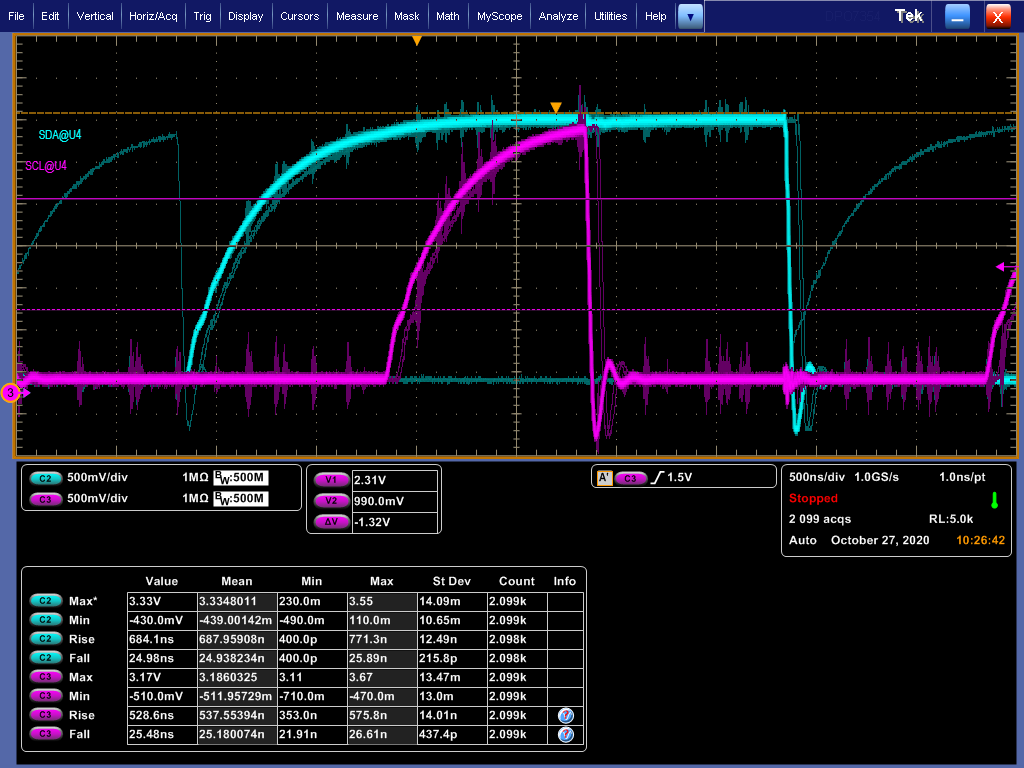Other Parts Discussed in Thread: TMP1075
Hi,
I am currently using the TMP108 temperature sensor. On my board, there will be noisy from other traces that coupled into the I2C signals (SDA, SCL). The noise can happen anytime during the signal (rising edge, falling edge, high state, low state). My concern is will this noise coupled into I2C signal, results in non-monotonic signal around the input threshold level (Vih = 2.31V, Vil = 0.99V @ Vcc = 3.3V).
Here is a screenshot of the waveform with infinite persistence mode turned on.
Here are some of my questions:
- When the noise happens during the signal edge, it can cause non-monotonic signal and potentially read the wrong logic level. How does this non-monotonic signal affects the I2C signal?
- Is there any hysteresis within the input of the TMP108 temperature sensor, such that the non-monotonic signal is not an issue?
- Based on I2C specification, the SDA data must be stable when SCL is high. How does the TMP108 latches data internally?
- Does the TMP108 device reads the data when SCL is logic high for some time and latch the data?
- Or it latch the data during rising edge of SCL?
- If it is latching data during rising edge, then potentially the non-monotonic signal will corrupt the communication, and read wrong data.
- With the noise coupled into SCL signal and create the non-monotonic rising edge, how will that affect the timing, as the setup/hold time might be changing due to the bad SI signal?
- Does the TMP108 uses the SCL clock to perform some internal operation, such that this clock must be fully monotonic?
- Lastly, the TMP108 allows 4 different addresses with the A0 pin connection. Now I am using 4 of them. If the signal to the A0 pin is coupled with this noise (SDA, SCL), will that affect my TMP108 addressing?
Thanks.


